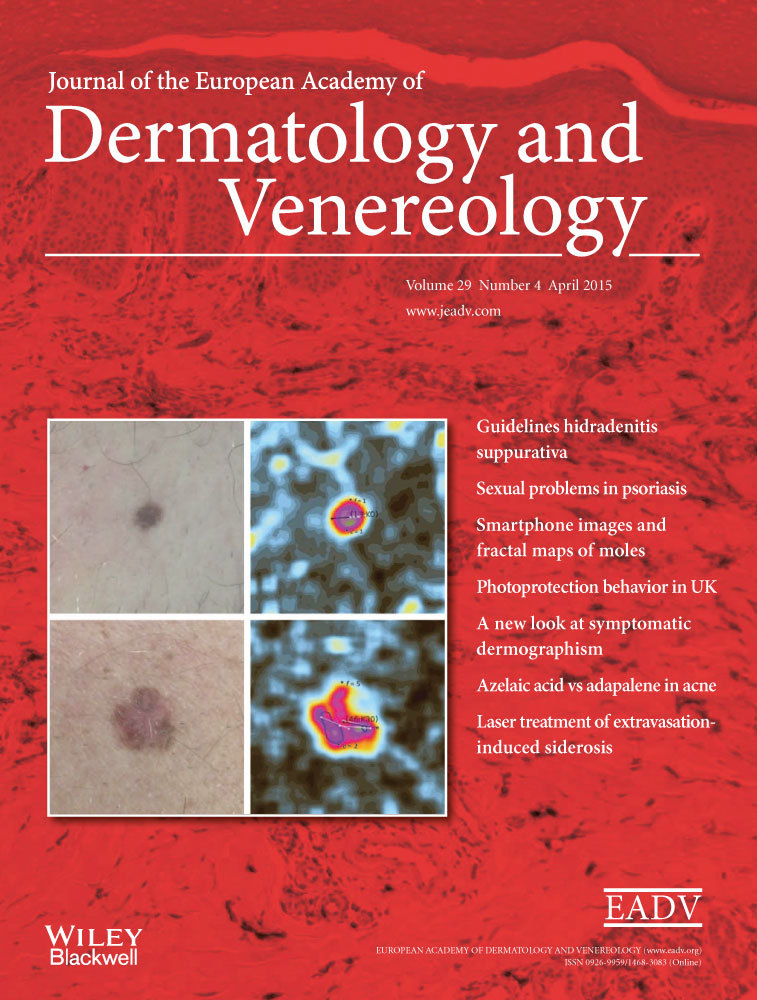Changes in nuclear morphology and chromatin texture of basal keratinocytes in melasma
Conflicts of interest:
None declared.
Funding sources:
None declared.
Abstract
Background
The pathogenesis of melasma and the role of keratinocytes in disease development and maintenance are not completely understood. Dermal abnormalities, the expression of inflammatory mediators, growth factors, epithelial expression of melanocortin and sexual hormones receptors suggest that not only melanocytes, but entire epidermal melanin unit is involved in melasma physiopathology.
Objectives
To compare nuclear morphological features and chromatin texture between basal keratinocytes in facial melasma and adjacent normal skin.
Methods
We took facial skin biopsies (2 mm melasma and adjacent normal skin) from women processed for haematoxylin and eosin. Thirty non-overlapping basal keratinocyte nuclei were segmented and descriptors of area, highest diameter, perimeter, circularity, pixel intensity, profilometric index (Ra) and fractal dimension were extracted using ImageJ software.
Results
Basal keratinocyte nuclei from facial melasma epidermis displayed larger size, irregular shape, hyperpigmentation and chromatin heterogeneity by fractal dimension than perilesional skin.
Conclusion
Basal keratinocytes from facial melasma display changes in nuclear form and chromatin texture, suggesting that the phenotype differences between melasma and adjacent facial skin can result from complete epidermal melanin unit alterations, not just hypertrophic melanocytes.




